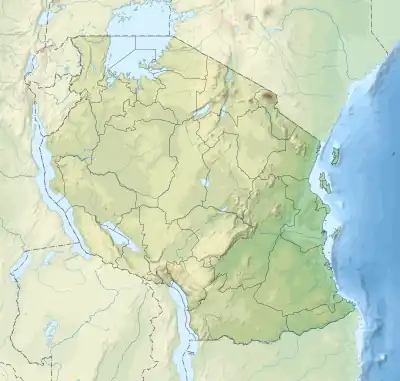 Shown within Tanzania | |
| Location | Miburani, Mafia District, Pwani Region, |
|---|---|
| Coordinates | 7°56′44.6″S 39°35′46.6″E / 7.945722°S 39.596278°E |
| Type | Settlement |
| History | |
| Material | Coral rag |
| Founded | 10th Century CE |
| Abandoned | 15th Century CE |
| Cultures | Swahili |
| Site notes | |
| Condition | Critically Endangered |
| Ownership | Tanzanian Government |
| Management | Antiquities Division, Ministry of Natural Resources and Tourism [1] |
| Architecture | |
| Architectural styles | Swahili |
| Official name | Kisimani Historic Site |
| Type | Cultural |
Kisimani Mafia (Magofu ya kale ya Kisimani Mafia in Swahili ) is a national historic site located in Miburani ward in the Mafia Archipelago of Pwani Region's Mafia District. They are Mafia's oldest ruins, which are close to the district's capital of Kilindoni. The earliest strata of mosques, according to archaeologist Neville Chittick who performed excavations there in the 1950s, date from about the tenth and eleventh centuries. However, many of them have since been washed into the Mafia Channel.
Tanzanian archaeologist Felix Chami has recently finished his work on the Mafia, pushing back the origins of the Swahili peoples of the coast and their connections to both the interior of Africa and the Indian Ocean.[2] Ancient coins occasionally turn up on beach washouts, and portions of the crumbling walls can be seen in the ocean just offshore.[3][4][5][6]
References
- ↑ "Antiquities Division". Retrieved 21 Jul 2022.
- ↑ "Kisimani Mafia". Retrieved 21 Jul 2022.
- ↑ "Ras Kisimani". Retrieved 21 Jul 2022.
- ↑ Pouwels, Randall L. "Eastern Africa and the Indian Ocean to 1800: Reviewing Relations in Historical Perspective." The International Journal of African Historical Studies, vol. 35, no. 2/3, 2002, pp. 385–425. JSTOR, https://doi.org/10.2307/3097619. Accessed 6 Aug. 2022.
- ↑ Spear, Thomas. "Swahili History and Society to 1900: A Classified Bibliography." History in Africa, vol. 27, 2000, pp. 339–73. JSTOR, https://doi.org/10.2307/3172120. Accessed 6 Aug. 2022.
- ↑ Chami, Felix A. "A Review of Swahili Archaeology." The African Archaeological Review, vol. 15, no. 3, 1998, pp. 199–218. JSTOR, http://www.jstor.org/stable/25130657. Accessed 6 Aug. 2022.